Kismet
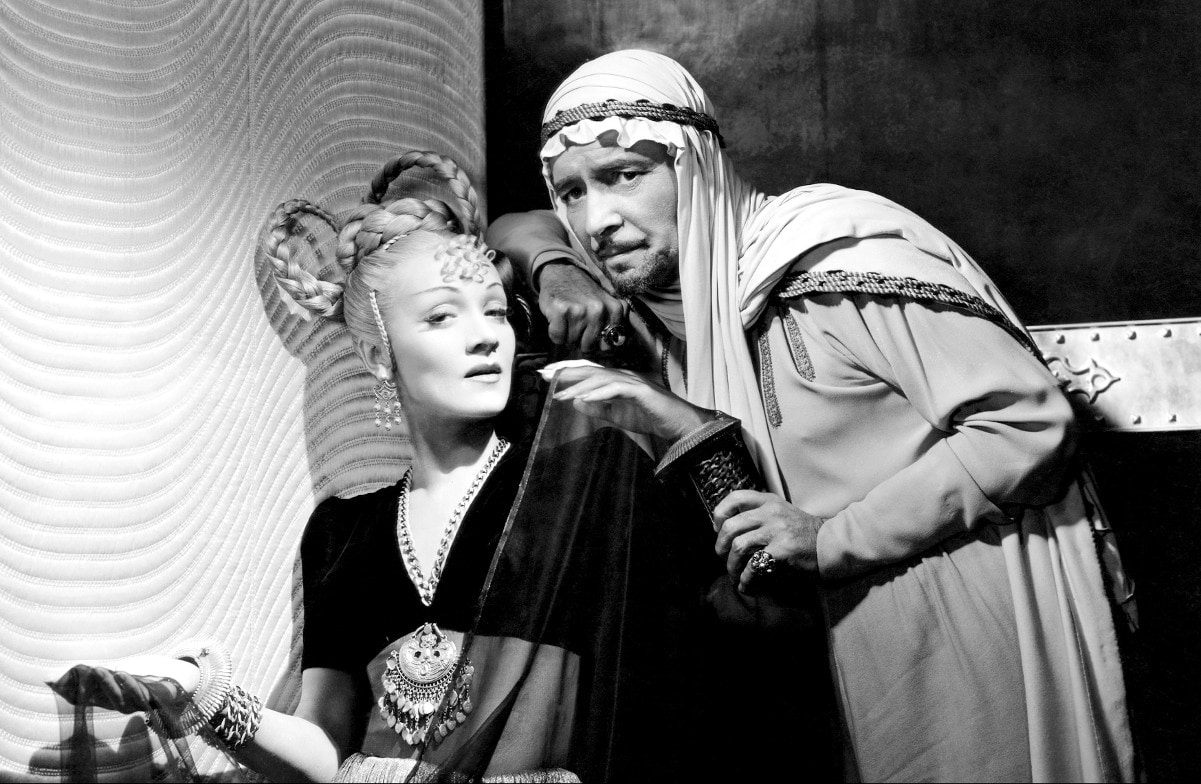
Brief Synopsis
Cast & Crew
William Dieterle
Ronald Colman
Marlene Dietrich
James Craig
Edward Arnold
Hugh Herbert
Film Details
Technical Specs

Synopsis
In ancient Baghdad, Hafiz, the so-called "king of the beggars," spends his days performing magic tricks for wealthy men and coaxing them out of their money, and his nights posing as the Prince of Hassir in the city's colorful taverns. Hafiz' beautiful daughter Marsinah is his pride and joy, and as he has vowed that she will marry a prince, he has built a high wall around their house and forbidden her to go out on her own. One night, while wearing his princely guise, Hafiz meets the Caliph, the new ruler of Arabia, who is posing as the carousing son of the royal gardener. Unaware of the Caliph's identity, Hafiz insults the new king and calls him a "yahoo." Hafiz then receives a message from his secret lover Jamilla, and rushes to meet her, unaware that she is the Grand Vizier's palace queen. Although the bored Jamilla knows that Hafiz is a liar, she nonetheless enjoys his charm and encourages his attentions. While Hafiz romances Jamilla, the Caliph, still posing as a peasant, makes love to Marsinah, who has escaped from her father's "prison." The Caliph is so entranced by Marsinah that as soon as he returns to his palace, he announces to his advisor, Agha, that he is marrying her the next day. The Caliph also makes arrangements for the Grand Vizier to be tried the next day for corruption. The next morning, Hafiz, who has suddenly become aware that his lovestruck daughter is all but grown, mopes around the marketplace, despondent because he has found no princely prospects for her. Hafiz' sad contemplations are interrupted by the attempted assassination of the Caliph, who has been targeted by the powerful, ambitious Grand Vizier. After witnessing the Grand Vizier's quick execution of the failed assassin, Hafiz determines to make Marsinah the Grand Vizier's new queen. To that end, Hafiz uses his magic skills to steal some clothes from the royal merchants, then tricks the Grand Vizier's own guards into securing an elephant for his "royal" transport. Presenting himself at the Grand Vizier's court as the newly arrived Prince of Hassir, Hafiz quickly ingratiates himself with the ruler. When Hafiz boldly denigrates the Grand Vizier's dancing girls, the Grand Vizier begs Jamilla, who was given to him as part of a political deal, to dance for his guest. Jamilla at first refuses, but upon learning that the guest is her lover, the Prince of Hassir, she performs her most seductive dance. During a private moment, Hafiz reassures Jamilla that he is still a rogue and pledges to free her that night. Hafiz then convinces the Grand Vizier to grant Marsinah, his "princess," an audience. As Hafiz is telling a stunned Marsinah about the Grand Vizier, however, police arrive at his house and arrest him for robbery. Hafiz is dragged back to the Grand Vizier, who laughingly orders that the impostor's hands be chopped off. Just before the blow is delivered, however, the Grand Vizier learns that his palace has been surrounded by the Caliph's soldiers. The Grand Vizier is then ordered to appear before the Caliph in open court. Seeing his opportunity, the still-bound Hafiz shouts out that he can help the Grand Vizier defeat his enemy, then agrees to assassinate the Caliph on condition that the Grand Vizier makes Marsinah his new queen. Hafiz rushes home to tell Marsinah the good news, but Marsinah refuses the marriage, declaring that she loves another. Ignoring her tears, Hafiz commands Marsinah to go to the Grand Vizier, who upon seeing her, orders Jamilla to step down as queen. Jamilla fights her dethronement until she realizes Hafiz is behind it and assumes he is acting on her behalf. As planned, Hafiz then goes with the Grand Vizier to open court and auditions to be the Caliph's royal magician. While Hafiz performs his magic, the Caliph realizes he is Marsinah's father, but before he can embrace him as his future in-law, Hafiz hurls a knife at him. The knife misses its mark, and Hafiz is immediately seized, but after hearing the Caliph announce that he is going to marry Marsinah, Hafiz escapes. Hafiz rushes to the Grand Vizier's palace to free Marsinah, who has since revealed to Jamilla her father's true identity, but is challenged by the Grand Vizier. After a fierce fight, Hafiz finally kills the Grand Vizier and is then recaptured by the Caliph. As punishment, the Caliph pronounces Hafiz the new prince of Hassir and orders him to leave for the remote region at sunset. The Caliph then pulls down Hafiz' wall and carries a thrilled Marsinah off to her royal wedding. As the happy young couple parades through the streets of Baghdad, Hafiz and his new bride, Jamilla, set off for life in Hassir, content that "kismet," or fate, has at last been kind to them.

Director
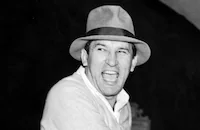
William Dieterle
Cast

Ronald Colman

Marlene Dietrich

James Craig

Edward Arnold

Hugh Herbert

Joy Ann Page

Florence Bates
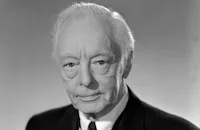
Harry Davenport
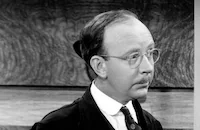
Hobart Cavanaugh
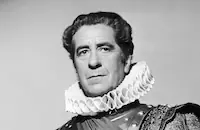
Robert Warwick
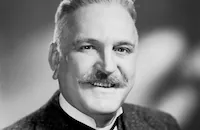
Frank Morgan
Julian Oliver
Victor Dubinsky
Saul Silverman
Herman Heller
Gabriel Leonoff
Beatrice Kraft
Evelyne Kraft
Barry Macollum
Victor Kilian
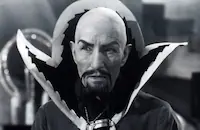
Charles Middleton
Harry Humphrey

Nestor Paiva
Roque Ybarra
Eve Whitney
Minerva Urecal

Joe Yule
Morgan Wallace
Frank Penny
Pete Cusanelli
John Maxwell
Walter De Palma
Jimmy Ames

Cy Kendall
Charles La Torre
Marek Windheim
Noble Blake
Anna Demetrio
Dan Seymour
Mitchell Lewis
Phiroz Nazir
Asit Ghosh
Carmen D'antonio
Joyce Gates
Jessie Tai Sing
Zedra Conde
Barbara Glenz
Frances Ramsden

Charles Judels
Dale Van Sickle

Harry Cording
Sammy Stein
Joseph Granby
Gabriel Gonzales
Bruno Weise
Zack Williams
John Merton
Dick Botiller
Jack "tiny" Lipson
Eddie Abdo
Billy Cummings
Lynne Arlen
Leslie Anthony
Rosalyn Lee
Sonia Carr
Carla Boehm
Eileen Herrick
Shelby Payne
Paul Singh
Pedro De Cordoba
Paul Bradley
Louis Manley
John Vernon Schaller
Ramiro Rivas
William Rivas
Crew
Preston Ames
Harold Arlen
Jeannette Bate
Daniel B. Cathcart
Jack Cole
Murray Cutter
Mark Davis
Jack Dawn
James Z. Flaster
Cedric Gibbons
A. Arnold Gillespie
Sydney Guilaroff
E. Y. Harburg
Irene
Henri Jaffa
Natalie Kalmus
Karinska
Standish J. Lambert
Ben Lewis
Frank B. Mackenzie
M. J. Mclaughlin
John Meehan
Warren Newcombe
John Nickolaus Jr.
Richard Pefferle
Everett Riskin
Charles Rosher
Douglas Shearer
Robert W. Shirley
Newell Sparks
Herbert Stahlberg
William Steinkamp
Michael Steinore
Victor Stoloff
Herbert Stothart
Marvin Stuart
Doreen Tryden
John A. Williams
Edwin B. Willis

Photo Collections
Videos
Movie Clip



Trailer
Hosted Intro
Film Details
Technical Specs

Award Nominations
Best Art Direction
Best Cinematography
Best Score
Best Sound
Articles
Kismet (1944)
Dietrich has only a small role in Kismet (1944), but her image and her legs helped draw in audiences. Ronald Colman had top billing over Dietrich for his role as Hafiz, a Baghdad con man posing as a prince to help his daughter marry royalty. Neither he nor his daughter realizes the gardener's son she is in love with is actually a prince in disguise. Hafiz's schemes also involve romancing Jamilla (Marlene Dietrich), the wife of a corrupt government official.
Dietrich knew her main purpose in the film was to provide decoration, but that didn't matter. Roles were beginning to get fewer and fewer for the forty-two-year-old actress. According to author Steven Bach in Marlene Dietrich: Life and Legend, "With the instinct for survival and focusing attention on herself that she had displayed since adolescence, she accepted reality, hiked up her nerve and her skirts, and told Dieterle, 'If it's legs they want, it's legs they'll get!'" Dietrich's longest scene consists of her attempting a kind of dance. In reality, the actress merely moved from one posed position to another. Shots of Dietrich were then intercut with long shots of a double.
Representatives from the Hays Office, the official censors at the time, were very concerned about Deitrich's costume for the dance. Bangles covering parts of her body were not enough. She had to also wear a skin-colored outfit under them and her belly button couldn't be shown. In addition to the revealing outfit, Deitrich's legs were painted with four coats of gold paint. Since the wood alcohol needed to remove the paint turned Deitrich's legs green, the actress decided to leave the paint on during her evening visits with servicemen at the Hollywood Canteen. A young Roddy McDowall was working there as a busboy and later recalled the impact of Dietrich's appearance with gold legs, "She leveled the place and popped the eyes of every serviceman there."
Dietrich was so dedicated to the American cause and entertaining troops that on the day filming ended for Kismet, she auctioned off most of her belongings to help the war effort while she was on USO tours. In the summer of 1944, Dietrich returned to the states for the premiere of Kismet after a ten-week USO assignment. But she soon discovered there were no other film roles available for her at the time and so she continued performing for USO shows.
Critics generally praised the artistic merits of the 1944 version of Kismet. Variety reported, "The rich Technicolor under the lavish art direction of Cedric Gibbons and Daniel B. Cathchart is an eye-filling cinematic easel throughout the entire 100 minutes. They have given the Baghdad saga size and stature." The film was nominated for four Academy Awards, including best Cinematography and Art Direction.
Producer: Everett Riskin
Director: William Dieterle
Screenplay: John Meehan. Based on play by Edward Knoblock.
Cinematography: Charles Rosher
Art Direction: Daniel B. Cathcart, Cedric Gibbons
Music: Harold Arlen, E. Y. Harburg, Herbert Stothart
Cast: Ronald Colman (Hafiz), Marlene Dietrich (Jamilla), James Craig (Caliph), Edward Arnold (Mansur, the Grand Vizier), Joy Page (Marsinah), Florence Bates (Karsha), Yvonne De Carlo (Handmaiden).
C-101m. Closed captioning. Descriptive video.
by Deborah Looney

Kismet (1944)
Quotes
Trivia
Notes
The film's opening credits conclude with captioned photographs of the principal actors and a voice-over narration introducing their characters and their relationship to one another. Hollywood Reporter news items and M-G-M publicity items add the following information about the production: Lawrence Hazard and novelist John Erskine were both assigned to write the screenplay, but their contributions to the completed film, if any, have not been confirmed. William Powell was first cast as the beggar (who was named "Hajj" in Edward Knoblock's play and in earlier film versions), and Richard Carlson was first cast as the "Caliph." Vera Zorina, Virginia Bruce and Marilyn Maxwell tested for the role of "Jamilla." Katharine Balfour and Mia Slavenska were tested for unspecified roles, and Leatrice Joy Gilbert, the daughter of actor John Gilbert, was to make her screen debut as "Rallah," a water bearer. Their participation in the completed film has not been confirmed, however. In addition, dance director Jack Cole was to appear in one of the dance sequences, but his onscreen participation has not been confirmed.
Kismet marked the first and only time that Marlene Dietrich appeared in an M-G-M film. According to modern sources, the film was to be the first of a two-picture deal for Dietrich, but the studio never found another project for her. According to Life, Dietrich's legs were covered with four coats of golden paint, and her dyed-blonde hair was sprinkled with powdered gold for her dance number. The article notes that Dietrich first wore gold-chain trousers for the scene, but switched to paint because the chains kept breaking. Art director Cedric Gibbons and producer Everett Riskin reportedly developed a new Technicolor technique for the film. In contrast to earlier Technicolor films, colors were to be selected to create a realistic look, not just to distract the eye. Another September 1943 M-G-M press item announced that Kismet was to be one of the "first productions to take account of the new world awareness" and noted that director William Dieterle was "taking pains to ensure that no offense" would be given to "Muslim moviegoers." A December 1943 Hollywood Reporter news item announced that New York painter Louise Schact had been hired for a "special exploitation assignment" in connection with the film, but the exact nature of her contribution has not been determined.
Edward Knoblock's play has been filmed many times, all under the title Kismet. The first version was produced in 1914 in Great Britain by Zenith Pictures in 1914, and was directed by Leedham Bantock and starred Oscar Asche. In 1920, Louis J. Gasnier directed Otis Skinner, the star of the stage play, in the first American version, which was produced by Robertson-Cole. Skinner appeared again in the role in First National's 1930 sound version, directed by John Francis Dillon. In 1931, First National released a German-language version directed by William Dieterle. In 1955, after Knoblock's play had been turned into a successful Broadway musical, M-G-M made its second version, a musical directed by Vincente Minnelli and starring Howard Keel and Ann Blyth. The play was then adapted for television and was broadcast on the ABC network on October 24, 1967, with José Ferrer and Anna Maria Alberghetti in the lead roles. To avoid confusion with the 1955 version, the 1944 theatrical version was later broadcast on television under the title An Oriental Dream.

















